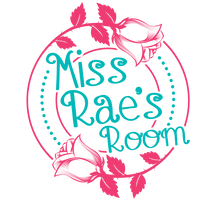|
The overarching goal of 21st century education is to equip today’s students with the ability to analyze, evaluate, and create; all of which are the highest levels of Bloom’s Taxonomy. Our states’ standardized testing assesses our students’ capabilities on Bloom’s high-ranking skills of analysis, evaluation, and creation through text-based constructed responses to open ended questions. For example, a student may be asked to explain the relationship between two characters in a text. Directions to this response will include citing evidence from the text to support the student’s answer. First, a student needs to read and comprehend the text. These are the lower levels of Bloom’s Taxonomy. Next, the student must analyze the text in relationship to the question and make an evaluation to answer the question. Finally, the student must create a written response that supports his/her claim. In order to begin building our learners toward mastery of high level educational learning objectives, we must support our students with appropriate and supportive instruction and environments. Think scaffolded supports! Learners do not just enter our schoolroom doors, equipped with these learning superpowers. Instead, we must teach our students to mastery. One strategy I keep in my toolkit is teaching students how to explain their reasoning, and here is one way I do that! First, I prep! I put quotes from our texts on chart paper. To incorporate some movement for my kinesthetic learners, I hang the quotes around the classroom. Students are partnered or grouped. They are then given 7 minutes at each quote. They must use this time to... -read the quote -discuss its meaning -narrow the meaning down to one sentence -write the meaning down, and finally… -support your answer with textual evidence. This activity allows my students to master the learning process with the support of their fellow learners, wrestle and engage with the curriculum, learn to work in a cooperative learning group, and own and guide their own learning, AND I get to use my doorbell for transition times! Grab my RACES Constructed Response Strategy HERE to help students organize their thinking when writing a text dependent, open response answer. R-Restate question A- Answer question C- Cite evidence E- Explain answer and how evidence supports your answer S- Summarize your answer This 50+ page BUNDLE includes: ~RACE Strategy Lesson with... ~Presentation Slides ~Modeled Constructed Response ~TTQA Strategy Lesson (Turn the Question Around) ~RACE Graphic Organizers - 2 options for differentiation ~Symbol posters for Text Annotations ~Text Evidence Note Taking Sheets - 2 options for differentiation ~Evidence Citation Posters ~Set of RACE posters for the classroom ~RACE Rubric with... ~Rubric Criteria ~Rubric Explanations ~RACE Strategy Reflection Sheet ~AND various rubric options! ~PLUS+ + + a second RACES option Strategy Lesson Happy Teaching! ~By Miss Rae Related ResourceRelated Blog
3 Comments
Samuel Anderson
7/9/2020 06:18:53 pm
Thanks! This is just what I'm looking for!
Reply
Rae
7/10/2020 09:38:55 am
I'm so happy to read that! Reach out any time!
Reply
Leave a Reply. |
CategoriesAll Comprehension CoPlanning CoTeaching Directed Reading DIY Fluency Fountas & Pinnell Graphic Organizers Guided Reading Lesson Planning Multi-Tiered Systems Of Support Phonological Awareness RAN Read And Respond Reading Reading Assessments Reading Comprehension Response To Intervention RTI Science Of Reading Science Of Reading For Special Education Teachers Special Education Special Education Eligibility Special Education Lesson Planning Teaching Strategy Visualizing & Verbalizing Visual Texts Vocabulary Writing Writing In Response To Reading |






 RSS Feed
RSS Feed